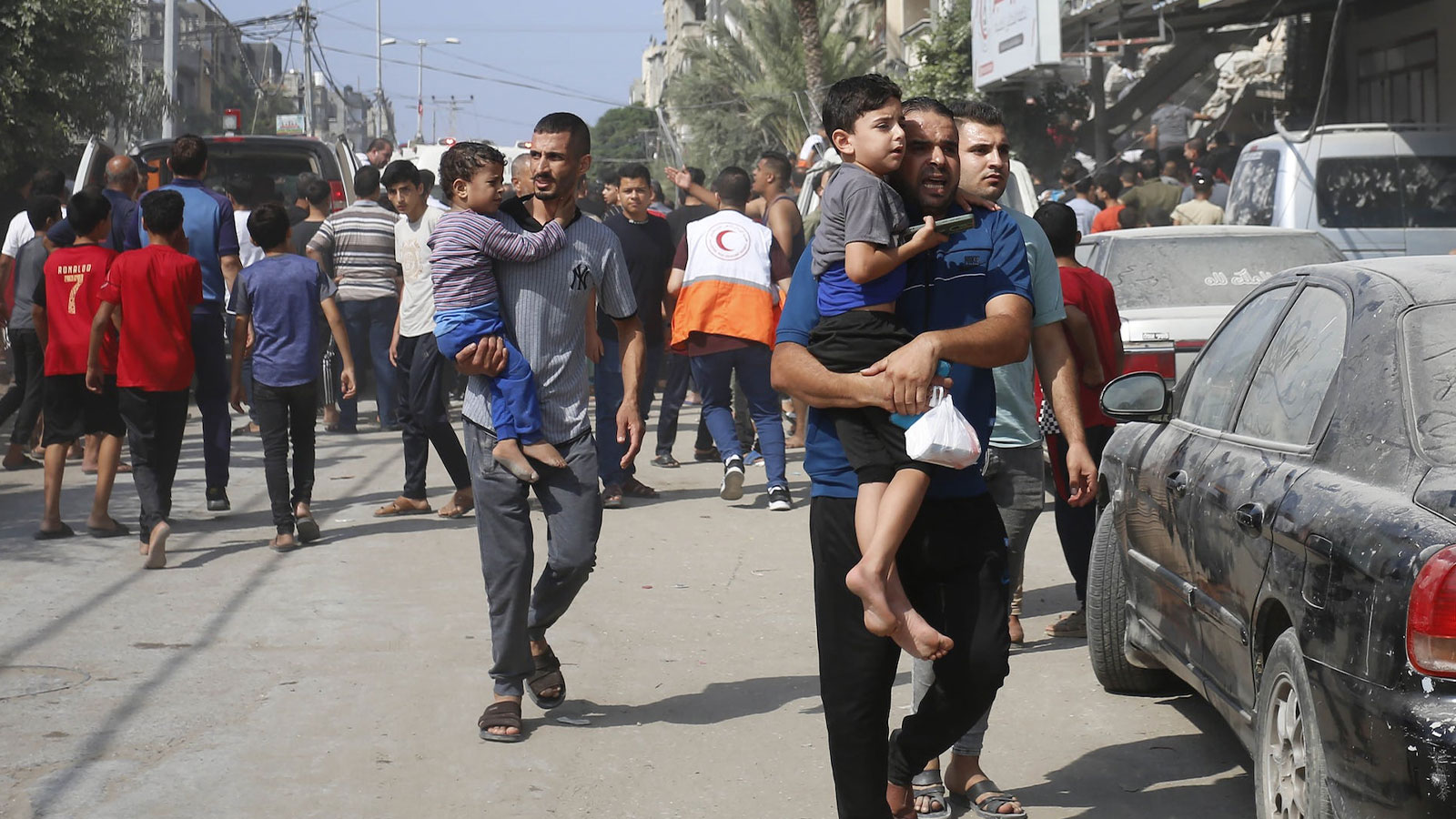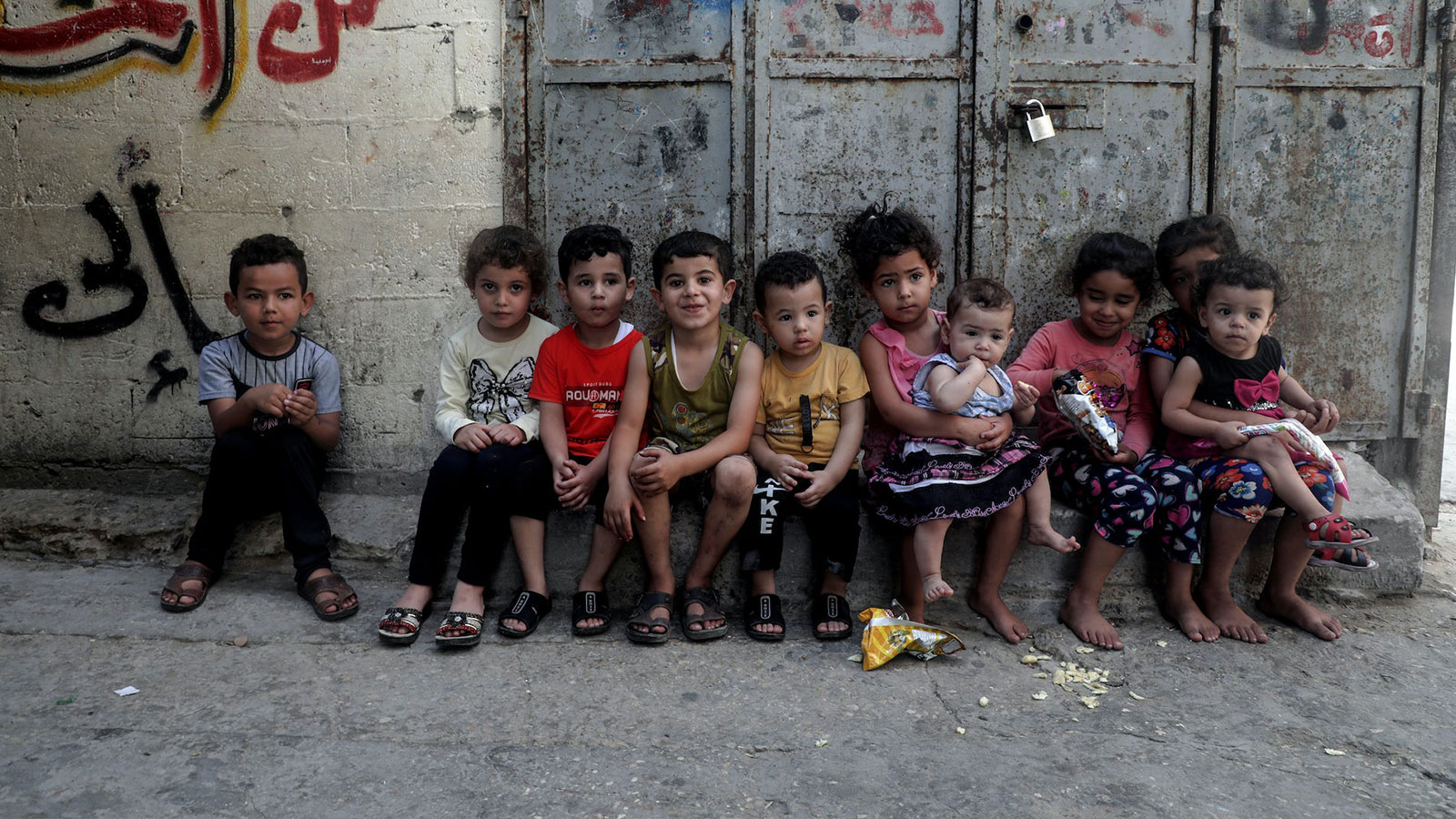A scholar who has studied Palestinian refugees for 20 years explains the history of their displacement and the stakes involved for those living in an indefinite exile.
By Michael Vicente Perez, The Conversation —
An estimated 1.4 million Palestinians have been displaced from their homes since the Israeli military began bombing the Gaza Strip on Oct. 8, 2023, in retaliation for a surprise attack by Hamas militants. Many of these Palestinians have sought refuge in United Nations emergency shelters in a situation the World Health Organization has described as “catastrophic.”
With shelters running out of adequate access to water, food, electricity and other critical supplies, humanitarian agencies are deeply concerned and fear a total breakdown in order.
While the current refugee crisis in Gaza has raised global concern over Palestinian displacement, this is not the first time Palestinians have endured the hardships of forced migration. Long before the latest upheaval, Palestinians who today live in Gaza and throughout the Middle East were forced from or fled their homes in what became the state of Israel. Today, they number about 5.9 million refugees, almost half of the entire global Palestinian population.
Over the past 20 years, my research as an anthropologist has focused on the situation of Palestinian displacement in the Middle East. Having studied some of the daunting challenges millions of Palestinians face as stateless refugees denied the ability to return to their homeland or the right of compensation, I believe it is critical to understand their history and what is at stake for those trapped in indefinite exile.
Fear, violence and exodus: the Nakba of 1948
The majority of Palestinian refugees today receive aid from the United Nations Relief and Works Agency, or UNRWA. Dispersed throughout the region, including in Jordan, Syria, Lebanon and the occupied Palestinian territories, about one-third of all Palestinian refugees live in UNRWA refugee camps, while the remainder live in surrounding cities and towns.
The origins of Palestinian displacement are ongoing and cannot be reduced to a single cause. Most Palestinian refugees, however, can trace their roots to two significant events in Palestinian history: The “Nakba” and the “Naksa.”

The 1948 Palestinian exodus, known in Arabic as Al Nakba, or the ‘catastrophe.’ History/Universal Images Group via Getty Images
The principal event in modern Palestinian history and memory is the Nakba, or what is roughly translated into the “catastrophe.” The term refers to the mass displacement of approximately 700,000 Palestinians during the Arab-Israeli War of 1948 and the creation of the state of Israel.
The majority of Palestine’s Arab population fled their homes during the war, seeking temporary refuge across the Middle East but hoping to return after hostilities ceased.
The mass exodus of Palestinians in 1948 resulted in two realities that have marked the region since. The first involved about 25,000 Palestinians displaced within the boundaries of what became Israel. Known as internally displaced Palestinians, this community did not cross any official border and thus never received refugee status under international law. Instead, they became Israeli citizens, distinguished by their legal designation in Israel as “present absentees.”
Through the Absentee Property Law the Israeli state proceeded to confiscate displaced Palestinians’ properties and deny their right to return to the homes and villages of their birth.
The second event involved over 700,000 Palestinians who fled beyond what became the de facto borders of Israel and acquired formal refugee status under the United Nations. This group of refugees sought shelter in areas of Palestine unconquered by Jewish forces, like Nablus and Jenin, and in neighboring states, including Jordan, Syria, Lebanon and Egypt.
Immediately following their displacement, these Palestinians were subject to ad hoc support from various international organizations until the 1949 creation of the UNRWA, which assumed official responsibility for the management of direct relief operations and refugee camp infrastructure throughout the Middle East.
In addition to providing education, health care and other services, including microfinancing and jobs training, the UNRWA has been supporting refugee camp improvement projects through road construction and home rehabilitation in the camps.
Refugees in Jordan, Egypt and Syria: the Naksa of 1967
The second-largest displacement of Palestinians occurred in 1967 during the Israel-Arab war known to Palestinians as Al Naksa or the “setback.”

A local barbershop inside Al-Wehdat Palestinian refugee camp in Amman. Artur Widak/NurPhoto via Getty Images
Fought between Israel on one side and Syria, Egypt and Jordan on the other, the war ended with Israel occupying territory in all three countries, including the remaining areas of Palestine: the West Bank and Gaza Strip. During the war, approximately 400,000 Palestinians were displaced from the West Bank and Gaza primarily to Jordan and housed in one of six new UNRWA refugee camps.
Others found refuge in Egypt and Syria. More than a third of those Palestinians displaced in 1967 were already refugees from 1948 and thus suffered a second forced migration. Just as in 1948, when the 1967 war ended, the Israeli government blocked the return of any refugees and proceeded to destroy several Palestinian villages in the occupied territory, including Emmaus, Yula and Beit Yuba. After their destruction, these areas were leased to Jewish Israelis.
Beyond Al-Nakba and Al-Naksa
Although the tragedies of the Nakba and the Naksa turned the vast majority of Palestinians into refugees, numerous events since then have increased their number. One of the most significant causes of Palestinian displacement today is the Israeli practice of home demolitions.
Whether as a punitive measure or the result of a permit system that rights groups say systematically discriminates against Palestinians, between 2009 and 2023 the practice destroyed over 9,000 homes and left approximately 14,000 Palestinians homeless.
The further displacement of Palestinians has also resulted from regional wars involving neither Palestinians nor Israelis. Following the end of Iraq’s occupation of Kuwait in 1990, over 300,000 Palestinians were expelled from Kuwait in retaliation for support offered by the leading Palestinian national organization, the Palestine Liberation Organization, to Saddam Hussein.
Since the start of the Syrian Civil War in 2011, over 120,000 Palestinian refugees have fled the country, primarily to Turkey and Jordan, while another 200,000 have been internally displaced. More recently, the Israel-Hamas war in the Gaza Strip has already internally displaced over 1.4 million Palestinians.
Many refugees, many exiles
Because Palestinians live under various governments in diverse circumstances, no single experience can account for their experience of exile. In Jordan, for example, where I have conducted research, Palestinian refugees can be divided into numerous groups, each with its own set of opportunities and challenges.
There are Palestinians displaced in 1948 who became citizens of Jordan but depend on UNRWA for basic services like education and health care. There are also refugees displaced from the Gaza Strip in 1967 who lack citizenship and are thus deprived of certain civil and political rights. More recently, there are Palestinians displaced from Syria for whom movement and work opportunities have been severely restricted in Jordan.
Palestinians living beyond Jordan also face distinct circumstances. In the West Bank, approximately 900,000 Palestinian refugees live under Israeli occupation, subject to a discriminatory system that human rights organizations have called “apartheid.”
Palestinian refugees in the Hamas-ruled Gaza Strip, who today number around one-and-a-half million, are currently living under a 16-year blockade established by Israel but supported by the Egyptian government. Since the closure began in 2007, restrictions on the import of goods, the movement of people and access to basic resources like electricity have produced dire conditions for Palestinians, including over 45% unemployment and food insecurity among 70% of households.
Since 1948, Palestinians in Lebanon have faced severe restrictions in work, education and health. Treated as an unwanted population in the country, their presence has been a source of significant divisions in Lebanon and a factor in numerous conflicts, including the Lebanese Civil War and the War of Camps between Syrian-backed militias and factions within the Palestinian Liberation Organization.
Permanent exile or return?

Palestinian families leave areas in Gaza on Oct. 24, 2023. Ashraf Amra/Anadolu via Getty Images
Palestinian refugees represent the longest protracted refugee situation in modern history. For 75 years now, they have been forced to live as a stateless population without the ability to return to their homeland.
The duration of their predicament is undoubtedly tied to the uniqueness of their displacement. Palestinians fled a homeland that became the state of another population, in this case Jewish, whose leaders treat the return of Palestinians as a demographic threat.
Any solution to Palestinian displacement that involves returning to territory in contemporary Israel thus faces the problem of overcoming the idea of Israel as an exclusively Jewish state. And yet that is the challenge. Whatever peace negotiations may bring, no permanent solution to the Palestine-Israel conflict can avoid answering the question of return.
Source: The Conversation
Michael Vicente Perez, Associate Professor of Anthropology, University of Memphis
Featured image: Children sitting near their home at al-Shati camp for Palestinian refugees in the central Gaza Strip on June 20, 2020. Majdi Fathi/NurPhoto via Getty Images















